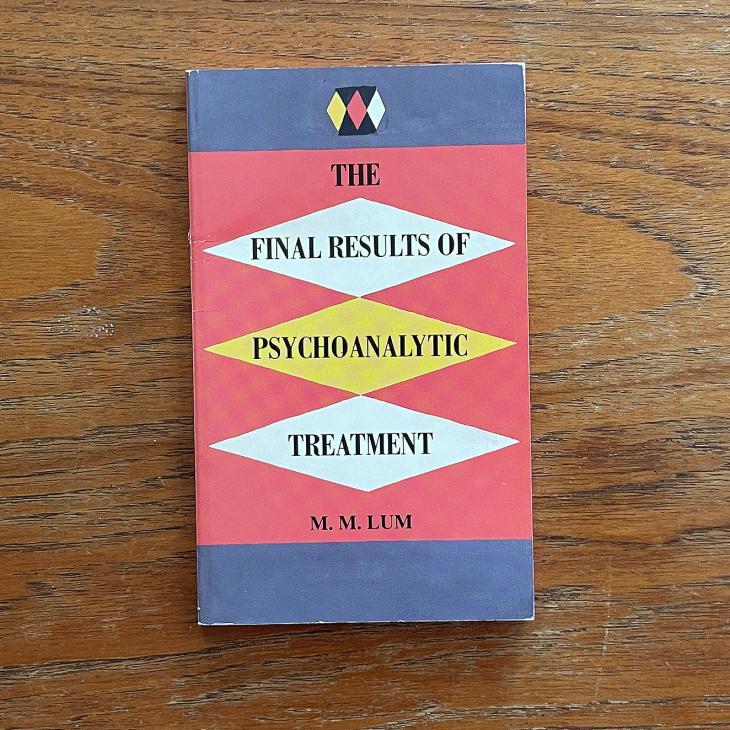The Final Results of Psychoanalytic Treatment
Mary Lum, 1991
Reviewed by Clara Davis, A26 (BFA+BA)
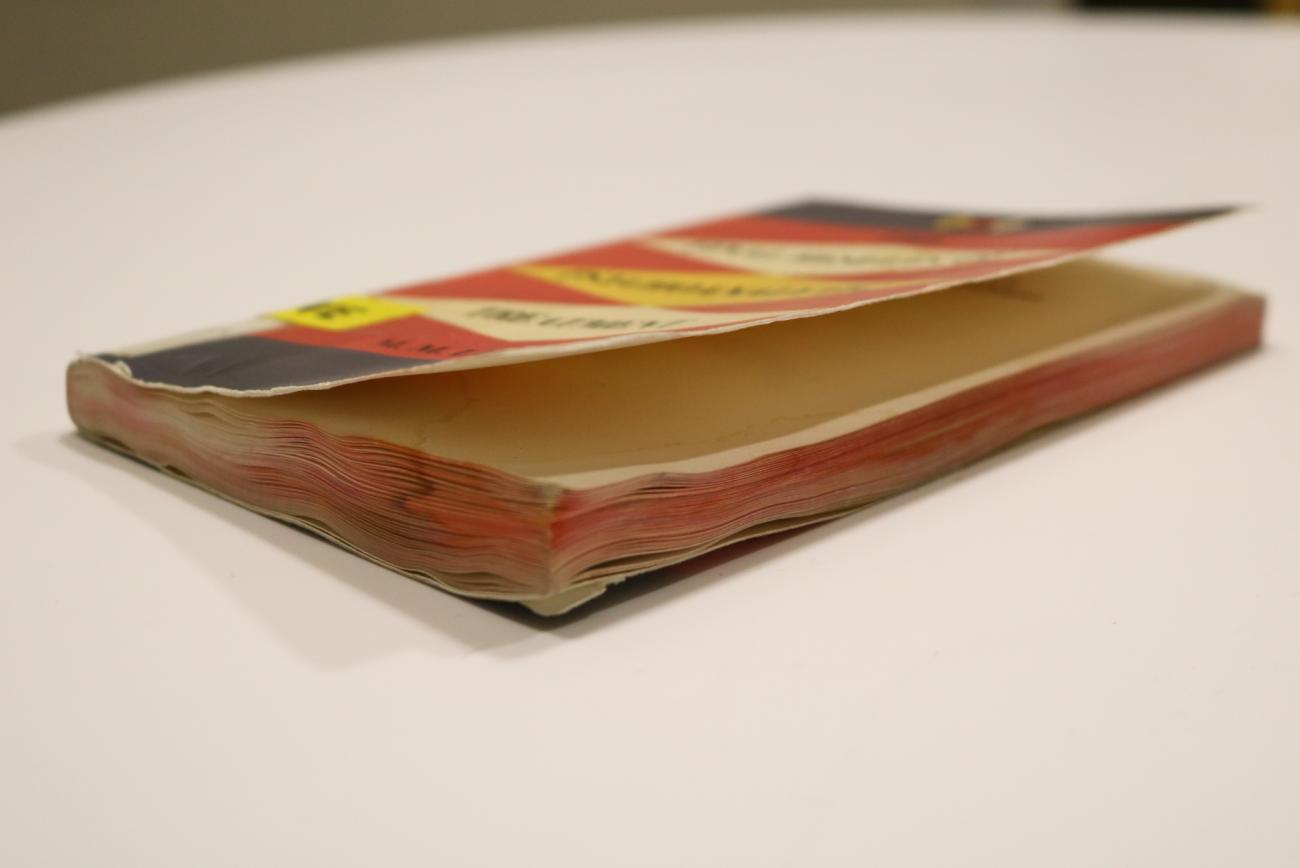
The SMFA Library’s copy of Mary Lum’s The Final Results of Psychoanalytic Treatment seems to have sustained some sort of water damage. Its price ($10, from Printed Matter) and catalog info are written in pencil, and there are green SMFA LIBRARY stamps throughout the text. But much of the “damage” done to the book is simulated by the artist. The faded red on the outer edge of the pages and “coffee stains” throughout the book add to its design’s allusion to 1950s modernist aesthetics and the physical form of a beaten-up paperback. Nothing in the cover of the book suggests it is an artist’s book. The artist even wrote her name as M. M. LUM, perhaps hoping to obscure her gender.
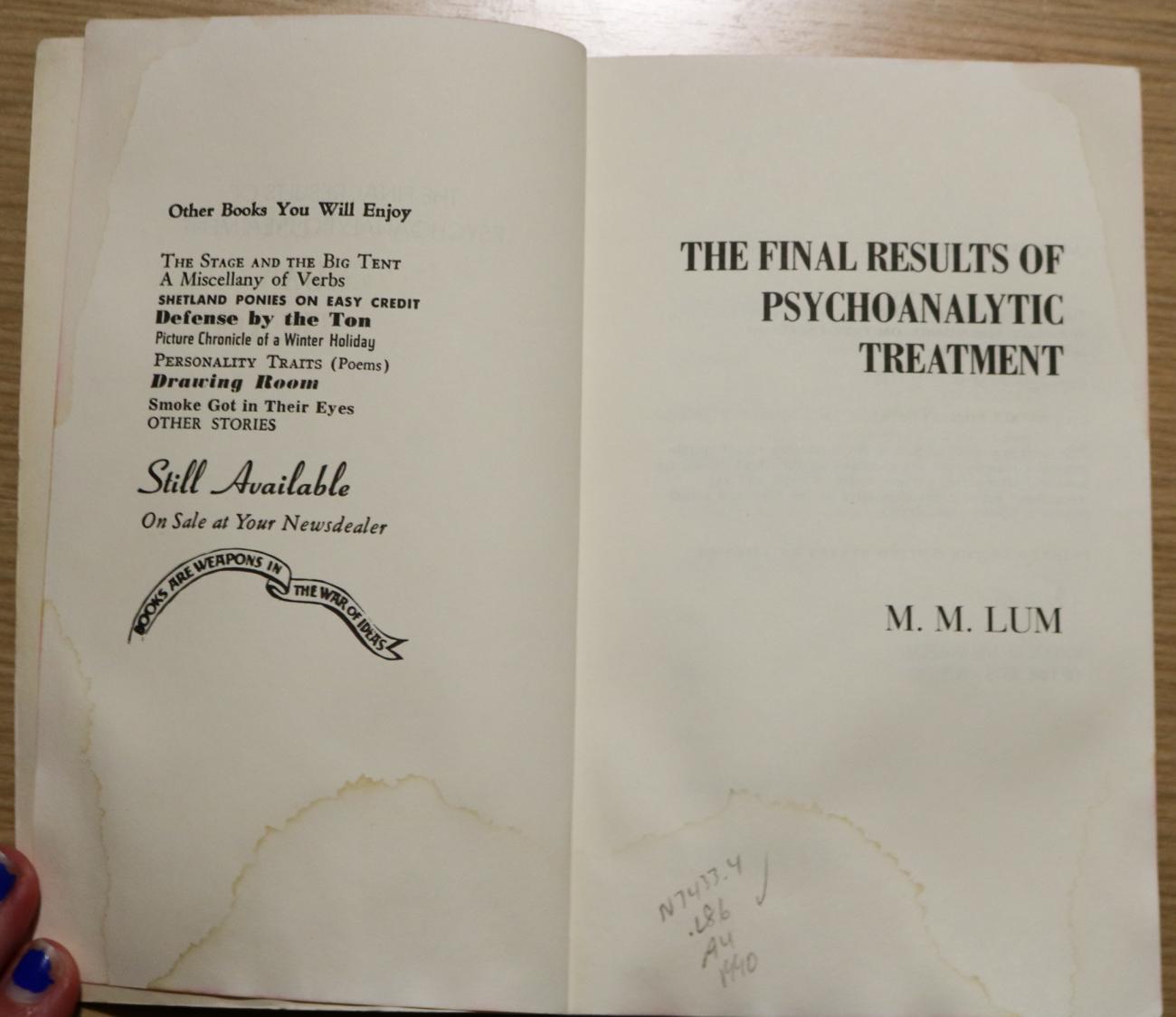
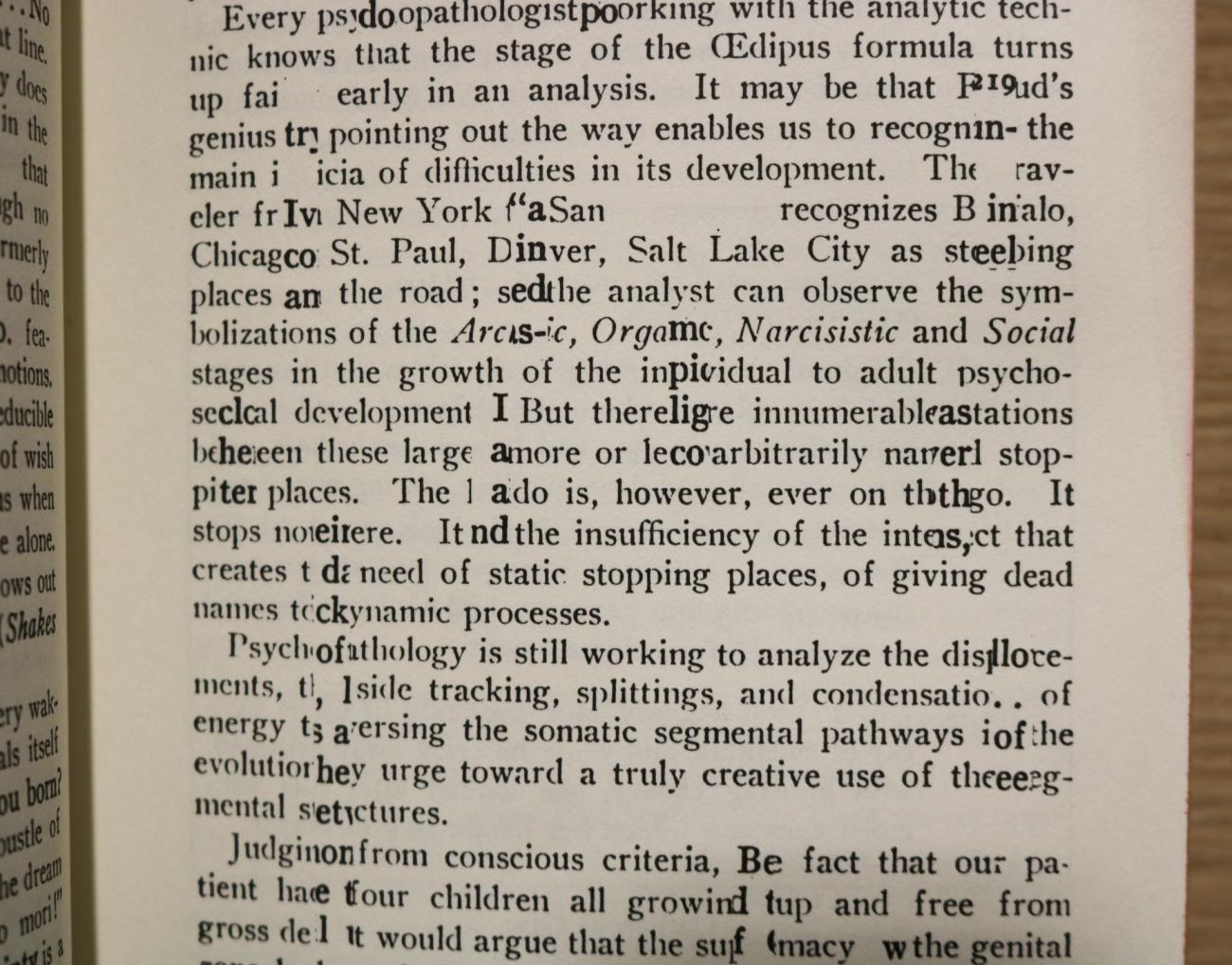
Upon attempting to read the book—perhaps hoping to learn about psychoanalysis—one will begin to notice something abnormal happening within the pages. If they get beyond the initial mind-numbing nature of the psychoanalysis writing, the reader will find that other text has been interspersed throughout. As the book progresses, the presence of these supplementary non-narratives turns into an “illegible” collage, made up of different languages, typefaces and shapes. The typography disrupts the meaning of the text, instead making one caught up in the act of reading itself. The book is ultimately about this reading experience. Rather than finding meaning in narrative, The Final Results’s meaning is found through how it brings together different types of language through typographic disruptions.
Throughout the book, type is image. There are patterns created with black backgrounds behind text, circles made of type, and areas that have been replaced with white space. These typographic images come together to subtly obscure the reading experience and allude to wear and tear the book may have faced. While at some points the original text is almost completely legible—with only slight additions of other work—at other points in the book it is impossible to make out a complete sentence. With a publication date of 1991, these images and collages were likely created with minimal computer aid, especially given the artist’s experience working with analog collage.
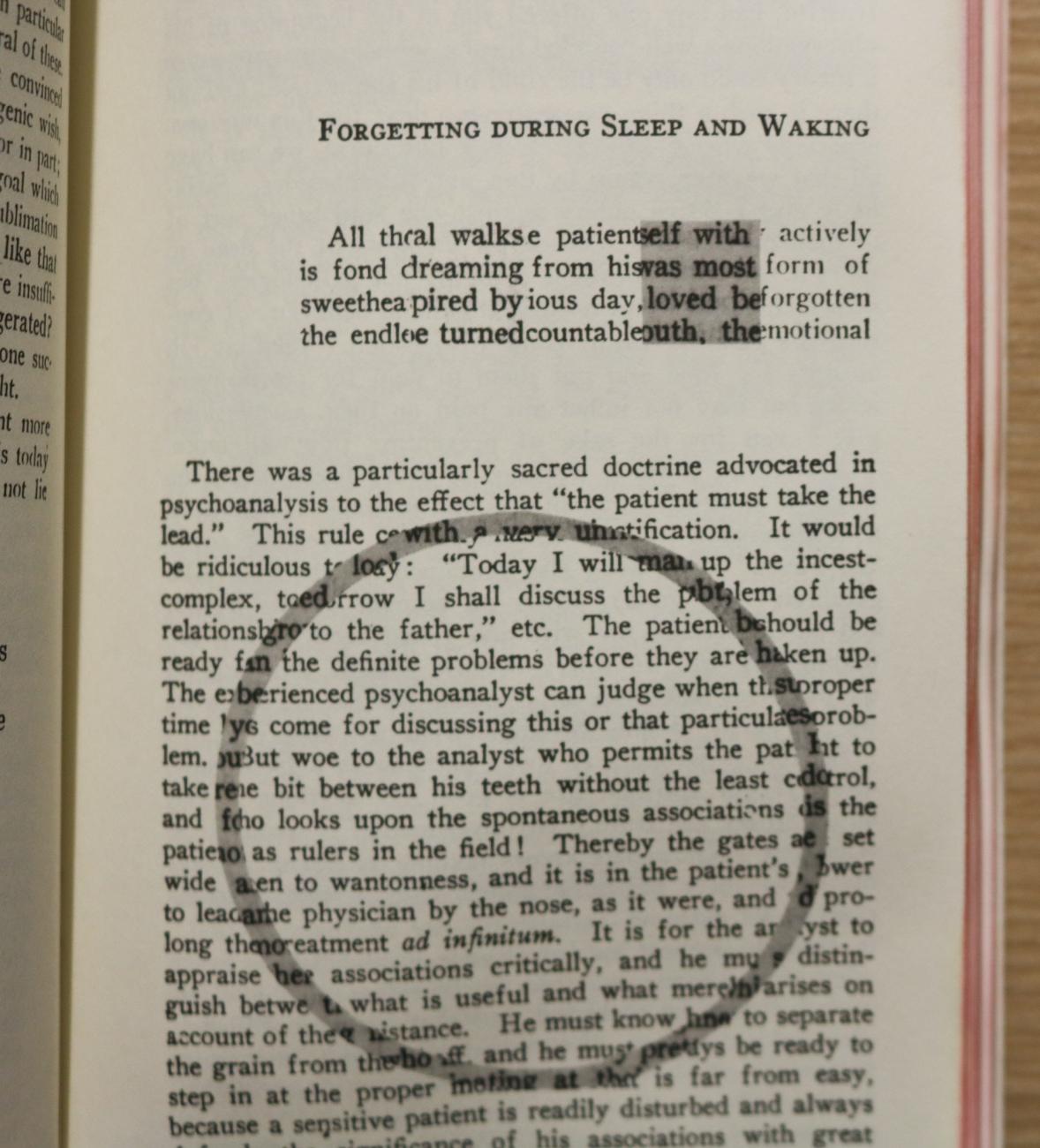
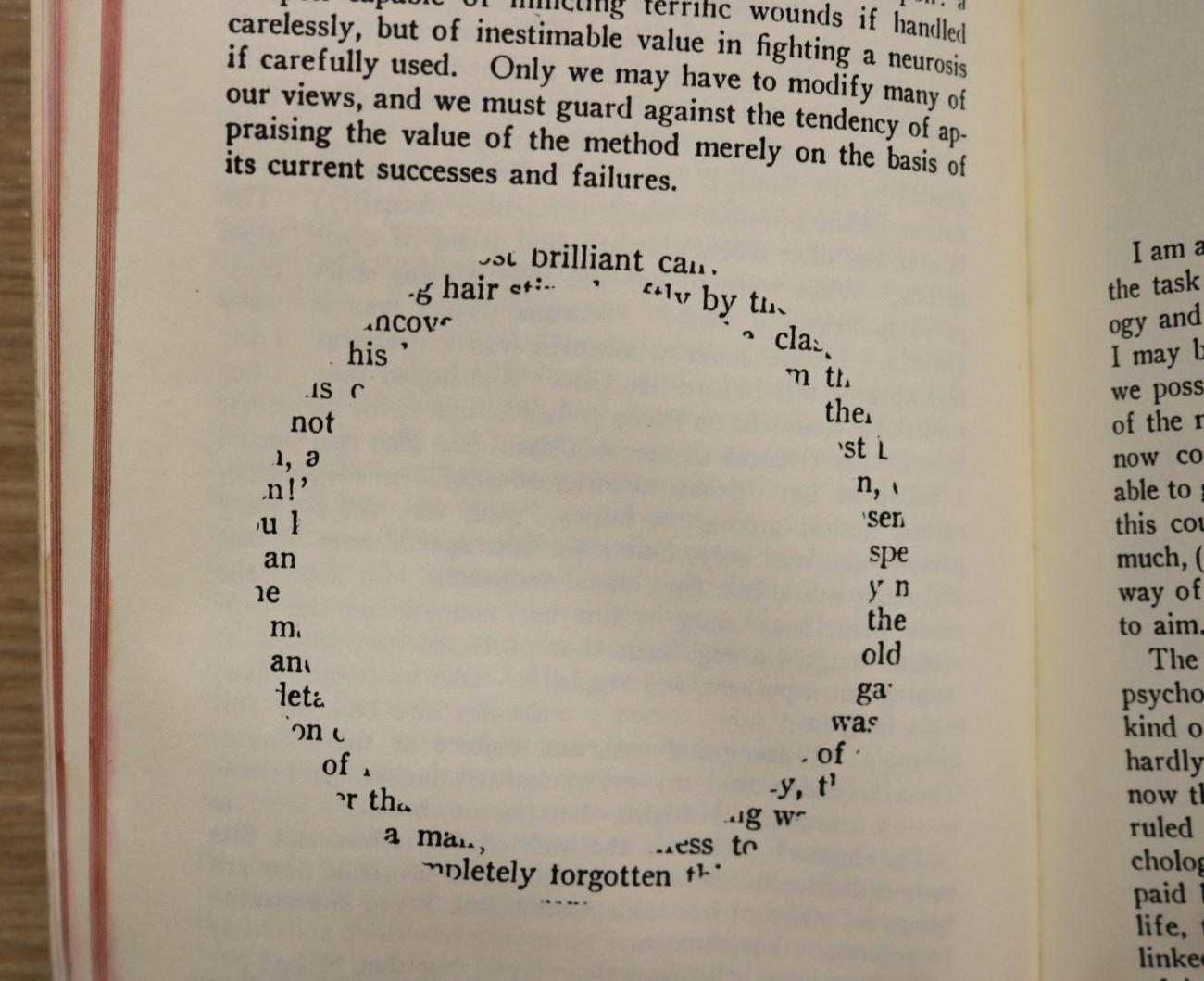
The broader structure of the book—on both an inter and intra chapter level—leads the reader on a gradual loss of narrative. Most graphic and typographic elements introduce themselves subtly; at first, they could be easily skimmed over, but eventually they completely take over the page. One chapter begins with what appears to be a coffee stain, but eventually the mug-bottom-circles evolve into more abstract forms made up of text, conveying a departure from reality.
Inter-chapter relations work similarly, for example in the “coffee stain” chapter (and the page preceding it) the text eases in the element of highlighted text. This highlighted text gradually increases in opacity until the “highlights” are opaque black. In the next chapter, and throughout the rest of the text, these black “highlights” grow into larger rectangles that no longer point to coherent sections of text.
Similarly, in the chapter where Lum introduces foreign languages to the text, a more subtle deconstruction with carefully typeset elements slowly morphs into a passage of Chinese type, standing out more clearly due to its characters’ thicker strokes and larger size within the line. These gradual transitions mimic the process of zoning out of one text (the psychoanalytic one) and into the associations and visual language that Lum inserts into the book.
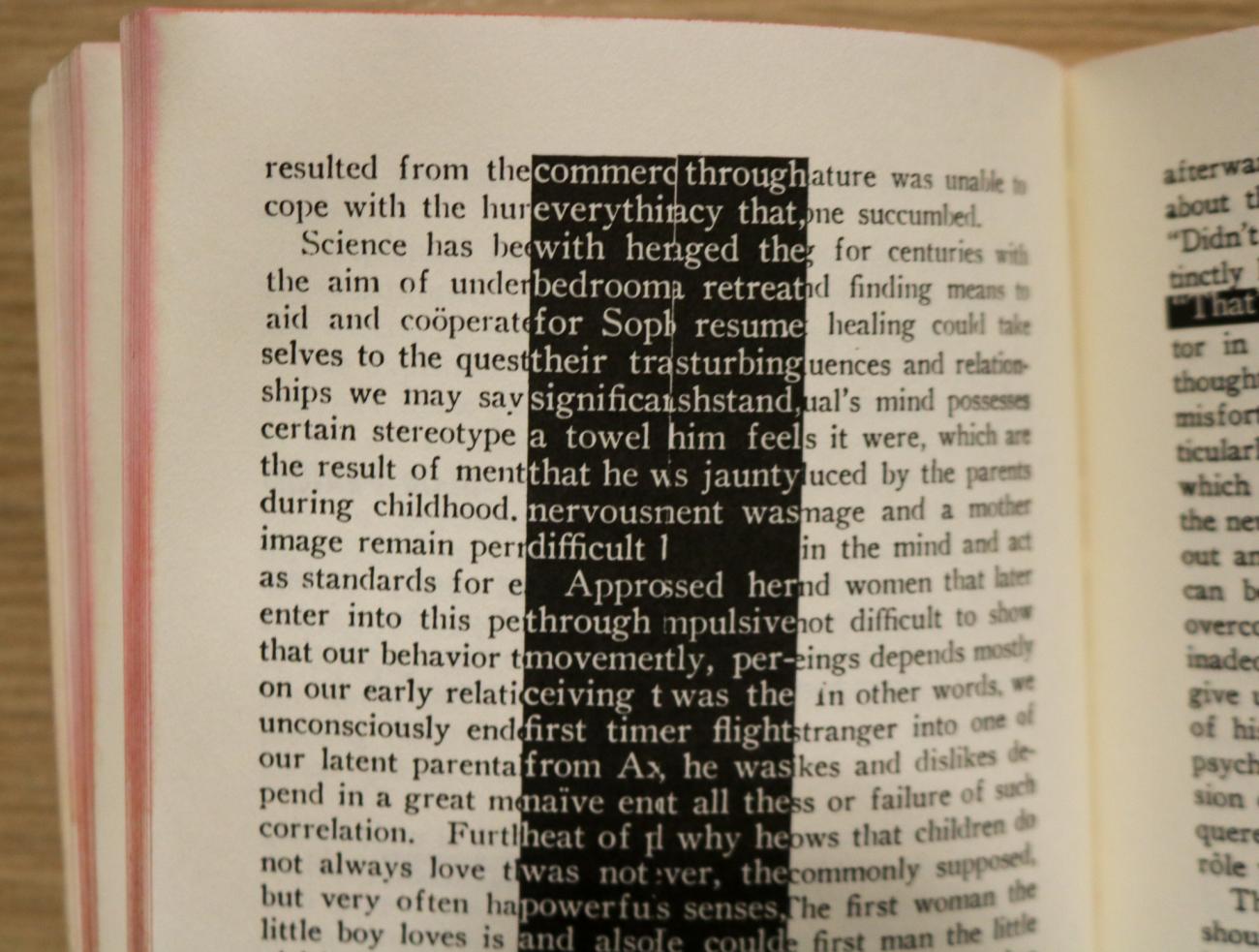
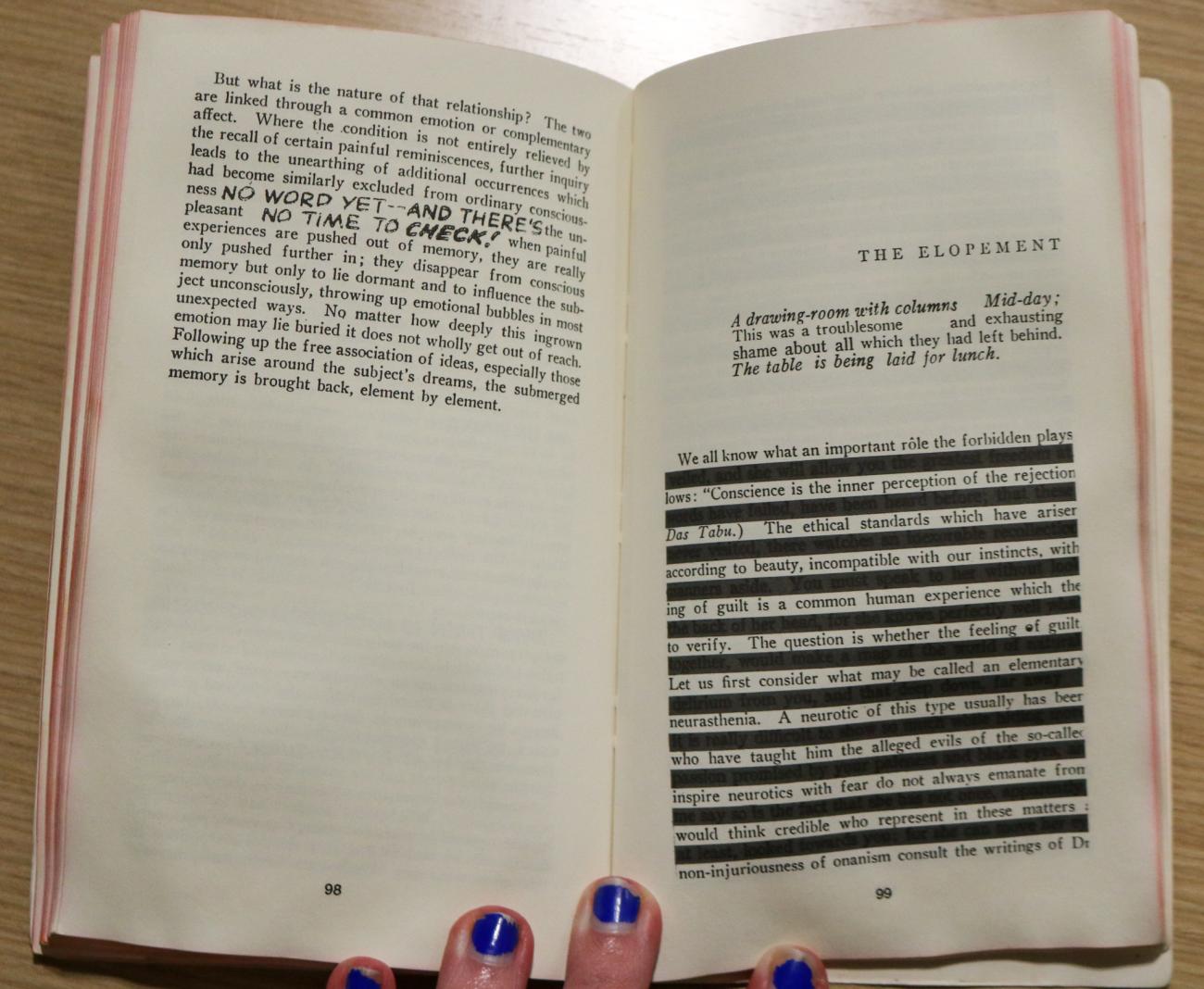
The last (mostly unobstructed, for once) line of The Final Results of Psychoanalytic Treatment reads: “This is the final result which the psychoanalytic must from the beginning bear in mind, SHe who has learned this secret holds the key to the greatest possibilities of successful treatment.” In Lum’s book however, the reader has not learned any secret as they are unable to “read” (in the traditional sense at least) most of the content.

Mary Lum told The Clark Research and Academic Program that her practice is focused on “implicat[ing] the viewer as part of the story” and “making [them] solve the problem.” Her non-linear collage pieces center space, memory, text, and the act of seeing/reading. This work uses photography, painting, drawing, and graphic design to serve Lum's interest in psychogeography (a term referring to the emotional relationship one has with geographic locations).
Lum’s hand painted typographic mural at Mass MoCA is made up of sections of various documents, including the placeholder text “lorem ipsum” and the Declaration of Independence. Since the site-specific mural is in a bike tunnel, the design takes into account the speed at which passing cyclists trying to read the walls move, and how that affects their perception. Similarly, The Final Results of Psychoanalytic Treatment considers how a reader will move through the text, and suggests associations to languages, narratives and genres they should make while reading. In trying to read the psychoanalytic text, readers become “part of the story” themselves, as “the story” here is the act of reading itself. Readers who picked up the book to learn about psychoanalysis find that they are immersed in a world of associations within the text, experientially referencing the field of psychoanalysis, instead of simply presenting a series of descriptions.
Related book in the library collection
Moving parts (&)
M.M. Lum, 2023
